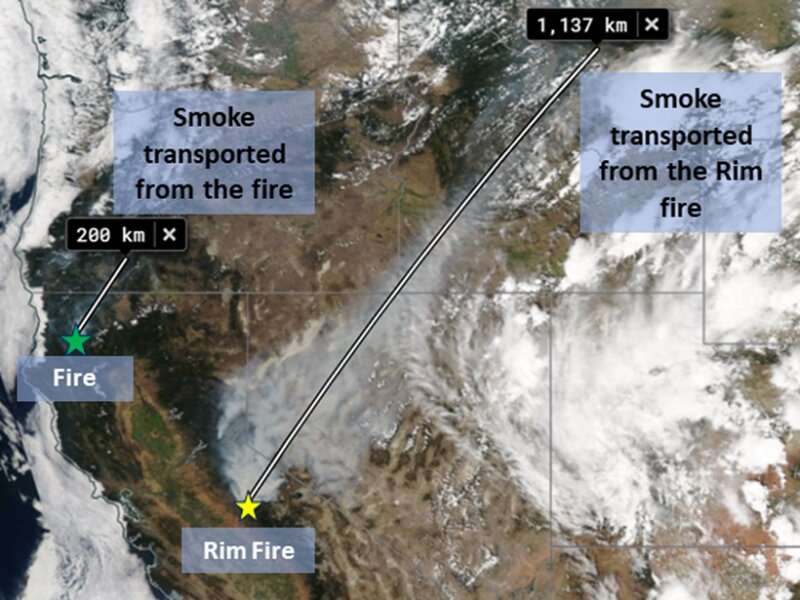Improved algorithms help scientists monitor wildfires from space

Raging wildfires pump tiny pollutants into the air, degrading air quality across vast areas. These pollutants, or aerosols, can soar high into the atmosphere at the tops of smoke plumes or creep close to the ground where they pose a health risk to humans. To accurately track these pollutants and their spread, scientists need accurate monitoring systems that can see the whole picture.
In the past, satellite monitoring, while providing a huge visual scope, fell short of on-the-ground measurements. In a new study, Loría-Salazar et al. evaluated improved algorithms using imagery from NASA's Moderate Resolution Imaging Spectroradiometer (MODIS) and Visible Infrared Imaging Radiometer Suite (VIIRS) instruments. They tracked the spread of aerosols outward from the fire source and upward into the atmosphere, focusing on August 2013 fires in the western United States.
The researchers found that the new algorithms are much more accurate, aligning well with on-the-ground measurements. Research into their plume heights also revealed that whether aerosols from wildfires will remain within the planetary boundary layer—the lowest layer of the atmosphere (where people live, breathe, and are exposed to smoke), which is heavily influenced by Earth's surface—depends on local geography and daily weather conditions. In addition, the researchers argue that it is necessary to continue investigation into the role of aerosols in local and regional weather when smoke penetrates different layers of the atmosphere.
The new research suggests that satellites may fill in observation gaps in areas without ground-based monitoring or by providing additional data in areas with complex weather patterns. The accurate algorithms used to track aerosol distribution can also inform models of future aerosol conditions, especially to predict impacts to human health.
More information: S. Marcela Loría‐Salazar et al, Evaluation of Novel NASA Moderate Resolution Imaging Spectroradiometer and Visible Infrared Imaging Radiometer Suite Aerosol Products and Assessment of Smoke Height Boundary Layer Ratio During Extreme Smoke Events in the Western USA, Journal of Geophysical Research: Atmospheres (2021). DOI: 10.1029/2020JD034180
Journal information: Journal of Geophysical Research - Atmospheres
Provided by Eos
This story is republished courtesy of Eos, hosted by the American Geophysical Union. Read the original story here.



















